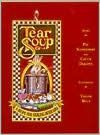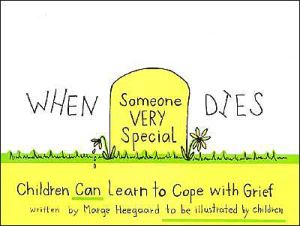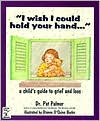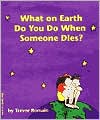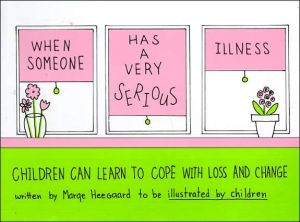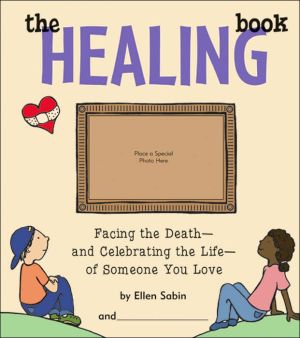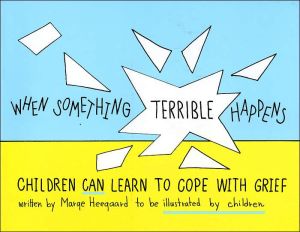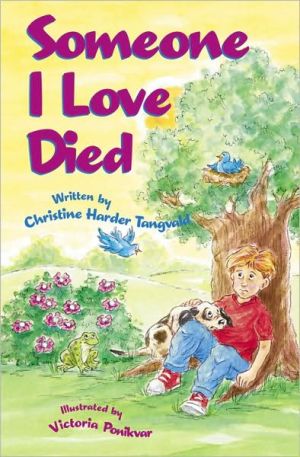Losing Someone You Love: Dealing with Death and Dying
The death of a friend or family member is one of the most difficult events a person can experience. And while people grieve in different ways, there are responses that are common to most of us, and there are common paths to healing. In Losing Someone You Love: Dealing With Death and Dying, author Tracy A. Phillips looks at the grieving process and at what can be done to help children and teens who experience loss.
Search in google:
The death of a friend or family member is one of the most difficult events a person can experience. And while people grieve in different ways, there are responses that are common to most of us, and there are common paths to healing. In Losing Someone You Love: Dealing With Death and Dying, author Tracy A. Phillips looks at the grieving process and at what can be done to help children and teens who experience loss.Children's LiteratureAimed at teens, this book helps to deal with the loss of a loved one. The author describes various grieving models outlined by Kubler-Ross and other authorities. Different chapters deal with the death of a parent, sibling, grandparent, friend, or a pet. Because teens are at such a vulnerable stage, the death of a loved one may be especially difficult. Those who care need to watch for signs of depression. "Suicide is the third leading cause of death for fifteen- to twenty-four-year-olds and the sixth leading cause of death for five- to fourteen-year-olds." Auto accidents, especially during prom week, are also a leading cause of death for this age group. Drinking and drug use may further complicate things. Journaling and art work may be a helpful emotional outlet. A support group of others who have gone through a similar experience is important for talking and sharing feelings. Organizations, books, and internet addresses that give help are listed. Chapter notes and a glossary are included. This is part of the "Focus Today" series. Reviewer: Carlee Hallman
Chapter 1 Death Is a Part of Life 7Chapter 2 The Grieving Process 17Chapter 3 Losing a Parent 31Chapter 4 Losing a Sibling 40Chapter 5 Losing a Grandparent 45Chapter 6 Losing a Friend 51Chapter 7 Losing a Pet 59Chapter 8 Before and After Death 65Chapter 9 Support for One Another 77Chapter Notes 91Glossary 96For More Information 98Further Reading 100Internet Addresses 101Index 102
\ Children's Literature - Carlee Hallman\ Aimed at teens, this book helps to deal with the loss of a loved one. The author describes various grieving models outlined by Kubler-Ross and other authorities. Different chapters deal with the death of a parent, sibling, grandparent, friend, or a pet. Because teens are at such a vulnerable stage, the death of a loved one may be especially difficult. Those who care need to watch for signs of depression. "Suicide is the third leading cause of death for fifteen- to twenty-four-year-olds and the sixth leading cause of death for five- to fourteen-year-olds." Auto accidents, especially during prom week, are also a leading cause of death for this age group. Drinking and drug use may further complicate things. Journaling and art work may be a helpful emotional outlet. A support group of others who have gone through a similar experience is important for talking and sharing feelings. Organizations, books, and internet addresses that give help are listed. Chapter notes and a glossary are included. This is part of the "Focus Today" series. Reviewer: Carlee Hallman\ \ \ \ \ School Library JournalGr 6–10—Phillips explores the grieving process and reflects on the loss of parents, a sibling, relatives, friends, and pets. In general, the book does not speak directly to young adults who are grieving, but rather to those interested in reading about how people, particularly teens, experience the process. Quotes, including some by adults who experienced loss in their youth, are interspersed throughout the book. The final chapters are most helpful, detailing typical responses and reactions to grief as well as how to find support and to be supportive. Unfortunately, Phillips's recommended resources are spare and outdated. The contact information of the nine organizations listed (Survivors of Suicide, Teen Age Grief, Inc., and others) includes mailing addresses and phone numbers—no Web addresses. The list of Internet resources is bare bones (four listings). Bold subheads, interior color photos, and pull quotes break up the text. This would not be the book to hand to a young person dealing with grief. While there are nuggets of important information, they are overshadowed by the volume's impersonal aspects. Keep this title on the assignment shelf.—Emily Chornomaz, Brooklyn Public Library, NY\ \

